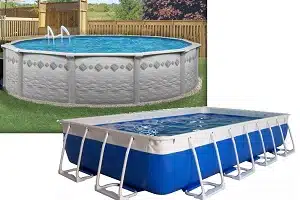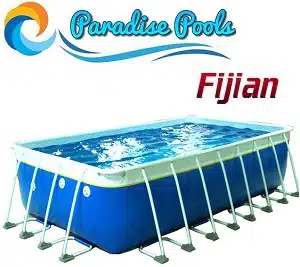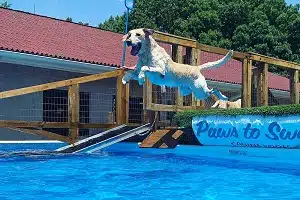Above Ground Pools for Ohio
Distribution Centers Include:
- Akron Ohio
- Cincinatti Ohio
- Cleveland Ohio
- Columbus Ohio
Above Ground Pools for Ohio
Above Ground Pools For Sale
Paradise Pools – The New Technology of Above Ground Pools Choices
- Rating: Five Stars
- 30 Year Warranty
- Heavy Duty Frame
- Heavy Duty Liner
- EXTRA Strong Footing
- Rating: Five Stars
- 30 Year Warranty
- Heavy Duty Frame
- Heavy Duty Liner
- Special Feet For Stabilizing
- Rating: Four Stars
- 30 Year Warranty
- Heavy Duty Frame
- Heavy Duty Liner
- Best For Most Applications
- Rating: Three and Half Stars
- 30 Year Warranty
- Standard Duty Frame
- Heavy Duty Liner
- Best Price
Traditional Steel Walled Above Ground Pools Choices
- Rating: Five Stars – Best of Style
- 40 Year Warranty
- Shapes: Circles and Ovals 54in Deep
- Familiar to many, ownership requires more hands on.
- Rating: Four Stars
- 30 Year Warranty
- Shapes: Circles and Ovals 52in Deep
- Familiar to many, ownership requires more hands on.
Our Most Affordable Steel Pools
- Rating: 2.5 Stars
- 20 Year Warranty
- Shapes: Circles and Ovals 52in Deep
- While this is our most affordable pool, it is still top quality. Familiar to many, ownership requires more hands on.

- Rating: 2.5 Stars
- 20 Year Warranty
- Shapes: Circles and Ovals 52in Deep
- While this is our most affordable pool, it is still top quality. Familiar to many, ownership requires more hands on.
- Rating: 2.5 Stars
- 20 Year Warranty
- Shapes: Ovals 54in Deep
- While this is our most affordable pool, it is still top quality. Familiar to many, ownership requires more hands on.
- Dog Day Care Pools
- Dog Pools For Home
- Dock Dog Diving Pools
- 35mill scratch proof, puncture resistant liner
- Top Quality Paradise Pools
- Any length up to 100ft an width up to 50ft
- Any depth up To 60in
- Round, Rectangle Oval, Lazy River
- No extra cost for custom pools
Custom Build Made To Order Pools – Get a Quote.![]()
Above Ground Pools for Ohio
Distribution Centers
OH-18, Akron, OH 44308
4359 W 36th St, Chicago, IL 60632

Above Ground Pools for Ohio

Our Distribution Centers
Our Distribution Center is not open to the public and the pools do not arrive there until after they are ordered. We will ship everything to your curbside
Distribution Warehouse
3401 Remington St, Springfield, IL 62707
- Algae In Above Ground Pools
Algae In Above Ground Pools is a problem that must be handled immediately before it gets out of control. Unless you want to grow algae. Algae are tiny plants that live in water and can bloom in a short time as their environment allows. Above Ground Pools are no strangers to algae , which can form when there is plentiful sunshine, and food. The trick to controlling algae is to control it’s environment.
Algae In Above Ground Pools
There are 3 main types of algae that are usually found in pool and spa water:
1. GREEN ALGAE – This type of algae floats in the water or forms on the sides of the pool or spa and appears dusty green. If it goes to far it may completely obscure the water.
2. YELLOW ALGAE – Also called “Mustard Algae” because of the mustard color, appears as yellow powder deposits usually on the shady sides of the walls.
3. BLACK ALGAE – This type of algae also appears as a Blue-Green color and forms very adhesive inch or so size spots on pool surfaces.How to Treat
When proper chlorination levels are maintained in your pool algae cannot form, Once algae does appear though normal levels of chlorine may not control it. Once algae is established you must treat the water with 30 PPM of Free Chlorine. This kills the algae and destroys the organic waste left behind.
Make sure the pump, filter and Chlorinator are working properly. Run pump continuously for 24 hours and then sweep thoroughly. Do not use the Pool or Spa until all chemical levels are back to normal and the water is crystal clear.Once Algae has a foothold in your pool you must get aggressive with it to defeat it.
Algae In Above Ground Pools
Paradise Pools Mart –taking care of algae
Pool Water Chemistry Definitions Definitions Pool water chemistry is the most misunderstood, yet vital component to overall pool care. Not only does proper water chemistry protect the swimmers using the pool, but it also protects the swimming pool itself. Gas heaters, electrical heat-pumps, filters, and even the vinyl-liner can all suffer severe damage from unbalanced pool water. In order to clear up some of the confusion surrounding this subject, we have listed some of the more important water chemistry terms below. Total Alkalinity Low total alkalinity could also cause staining and weaken your vinyl liner, causing it to wrinkle. The total alkalinity should measure 80 ppm for swimming pools using granular chlorine, or 100 – 120 ppm for swimming pools using stabilized chlorine such as chlorine tablets. pH For pools that use “non-stabilized chlorine”, that is chlorine that does not have cyanuric acid as an ingredient, cyanuric acid should be added in the spring when the pool is clear and the water is balanced. The cyanuric acid level should measure 40-80 ppm. Cloudy Water The best way to treat a cloudy pool is chlorine, chlorine, and more chlorine. You should add a large dose of non-stabilized chlorine (either calcium hypochlorite or sodium hypochlorite) each day for four to five days straight, keeping your free chlorine level above 3 ppm at all times and running the pool filter 24 hours a day. If this does not clear your water, then you can try clarifiers and other products. But first shock your pool water. Algae are microscopic plants which can transform your pool water from clear blue to a swamp in as little as 24 hours. Spores are introduced into the pool through the air, from rain water, and from swimmers walking across the grass and then jumping into the pool. Algae blooms are common after heavy rain showers and when the pool water temperature is high. There are many types of algae, the most common in our area being green algae, mustard algae, and black algae. The most effective way of preventing algae growth is to maintain a free chlorine level of at least 1.5 ppm at all times, run the pool filter 24 hours a day, and to add a dose of algaecide once a week. We have also found that adding Algaecide to the pool water decreases your chances of suffering from an algae bloom. An Algaecide acts as an inhibitor against algae growth by lowering algae’s ability to process carbon dioxide in the water making it difficult for an algae spore to germinate and grow. If you do develop algae, apply the appropriate algaecide, shock the pool, and brush down the entire pool causing the algae to become suspended in the pool water. The next day, if anything settles out, vac it out to “Waste”. If minerals are present in the pool water, they can cause the pool water to turn green, brown, yellow, and even purple. The water would look clear but discolored. It can be very difficult to distinguish between green water caused by green algae and green water caused by a mineral problem. A telltale sign of a mineral problem is the discoloring of the pool water shortly after shocking the pool. If this occurs, you will need to add a mineral sequester to the pool. Exactly how much is a guess. We have seen cases where one bottle has solved the problem, and others where multiple bottles were needed. Mineral problems are a tough nut to crack. The pool industry is just now trying to get a handle on it. Stains on the vinyl liner are also treated by adding a mineral sequester. Persistent stains might need to be treated with an “on contact” product. These must be applied directly to the stained area of the pool. If the stain is on the bottom of the pool, applying the product directly on the stain can be tricky, but possible. Due to the acidic nature of our tap water and our rain. We tend to suffer more from low pH pool water than from high pH pool water. Fortunately, correcting the pH balance of your pool water is quite simple. All you need to do is add pH Increaser (also called soda ash and base). But before you add pH Increaser be sure to get your Total Alkalinity balanced first. Once the Total Alkalinity is balanced, the pH can be adjusted more accurately.Total Hardness
Total Hardness refers to the amount of calcium and magnesium in your pool water. When total hardness is too high, scale can form causing the water to appear cloudy. When total hardness is too low, the water will corrode metal fixtures including copper components found in gas heaters and electrical heat-pumps. The total hardness should measure 150 – 300 ppm.Chlorine
Chlorine is a disinfectant designed to sanitize (kill disease-causing organisms) and oxidize (destroy ammonia, nitrogen-containing contaminants and swimmer waste). A disinfectant must be continually active in the pool water so that it may react instantaneously with bacteria, algae and other organic matter as they are introduced into the water. The level of active chlorine is called the free chlorine residual and should measure 1.5 – 3.0 ppm.
Total Alkalinity measures the amount of alkaline substances in the pool water. Alkaline substances buffer your water against sudden changes in the pH. When the total alkalinity is too low, the water will corrode metal fixtures including copper components found in gas heaters and electrical heat-pumps.
pH refers to the intensity of acid or alkaline materials in your pool water. pH is measured on a pH scale extending from 1 (extremely acidic) to 14 (extremely alkaline). A pH of 7.0 is considered to be neutral. High pH (higher than 7.8) can cause eye and skin irritation, reduce the sanitizing action of chlorine, and cause the water to appear cloudy. Low pH (less than 7.2) can cause eye and skin irritation and corrode metal fixtures including copper components found in gas heaters and electrical heat-pumps. The pH should measure 7.2 – 7.8.Cyanuric Acid (Chlorine Stabilizer)
Cyanuric acid lengthens the life of chlorine in the pool water. Chlorine products that contain cyanuric acid as an ingredient are referred to as “stabilized chlorine”. These types of chlorine are used to maintain consistent levels of chlorine in the pool water. But they are not very effective at clearing cloudy water or killing algae.Pool Water Problems and Solutions
Pool water can turn cloudy for a variety of reasons. The most common cause of cloudy water is either dead algae floating in the pool water or other small particles floating in the water such as dissolved leaves.Pool Water Chemistry Definitions
Pool Water Problems and Solutions
Pool Water Chemistry Definitions
Minerals
Low pH
Pool Water Chemistry Definitions

Paradise Pools Mart
Our You Tube Channel

Paradise Pools Mart
Our You Tube Channel
Above Ground Pools for Ohio









